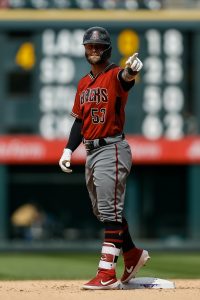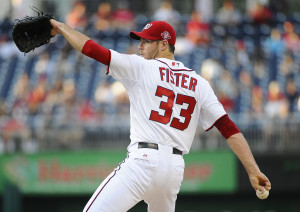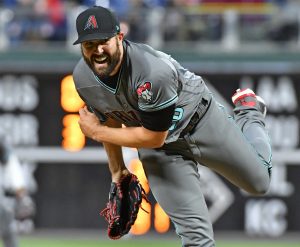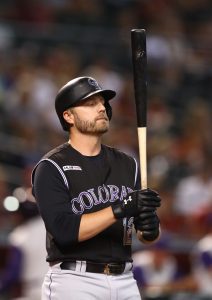With the DH likely headed to the National League in 2020, the Braves may have a few more at-bats to spread around. As a team, the Braves finished 2019 with a 102 wRC+, the 4th-highest mark in the National League, though they managed to turn that production into 855 runs, fewer than only the Nationals and Dodgers. To repeat at those levels, Atlanta has the difficult task of replacing the production from Bringer of Rain Josh Donaldson, who joined the Twins after putting up 37 bombs, 96 runs, 94 RBIs, and an all-around stellar 6.0 rWAR season in 2019. A regular DH should help.
Atlanta boasts a good deal of depth to utilize in a potential designated hitter role. For starters, there’s the question of whether Johan Camargo becomes a four-down back at third base. Austin Riley may eventually take over the hot corner, but if he doesn’t, there are probably some DH at-bats to go his way. Riley was slated to spend some time at Triple-A, but if there is no Triple-A, the Braves may just as soon bring his light-tower power to the big-league level. Riley definitely struggled closing out his rookie year, but power (.471 SLG and .245 ISO) isn’t the problem. Riley needs to close the gap on his 5.4% BB% and 36.4 K%, but given his youth and potential, he’s probably the guy the Braves want to claim the DH spot (if he doesn’t claim third base outright).
If Riley doesn’t improve the other aspects of his game, then he’s essentially Adam Duvall, another candidate for DH at-bats. Duvall, 31, has a career .229 ISO and .461 SLG at the big league level, numbers that could land him in the middle of the order if it weren’t for other drawbacks to his game. In 130 plate appearances last season, Duvall put together a solid 121 wRC+ showing by hitting .267/.315/.567. That output was bolstered by an absurd .300 ISO. He also had some good luck, as his .306 BABIP was a fair bit higher than his career mark of .271. Duvall could certainly see some time at DH, especially if they want to save Riley for a more stable playing environment, but he has gone just 1 for 3 in posting a wRC+ over 100 when given more than 400 plate appearances. In a short season, however, Duvall has the type of short-burst approach that could perform.
The safer option is to use the DH to rest their four-man outfield of Ronald Acuna Jr., Ender Inciarte, Marcell Ozuna, and Nick Markakis. Acuna will be in there every day, but he can move around the outfield and would probably benefit from a DHing day every now and again. Ozuna and Markakis complement each other perfectly in some ways, with Ozuna the right-handed power bat and Markakis the lefty on-base option, and they can both handle themselves in the field. There’s no reason both shouldn’t be in the lineup, however, especially if Inciarte is healthy enough to spend the better part of most weeks manning centerfield. Inciarte, 29, played just 65 games last season, but he’s a true difference-maker with the glove when healthy (21 OAA in 2018, 20 OAA in 2017). Assuming health, all four of Acuna, Inciarte, Ozuna, and Markakis should find their names on the lineup card most days.
With Acuna taking his spot in right, Markakis might be the guy who gets the most at-bats as the ostensible extra bat. But when southpaws take the hill, the Braves can rest some combination of Markakis/Inciarte while getting Duvall or Riley some run. Both mashed lefties in 2019. Say they go with a straight left-right platoon: Markakis hit .298/.371/.446 vs. righties in 2019, and Duvall (small sample alert) hit .333/.386/.744 vs lefties. Even take Duvall’s career splits versus lefties (.240/.318/.473), and a leveraged platoon of Markakis and Duvall makes for a pretty potent designated hitter.
This post continues a recent series from MLBTR looking at designated hitters options for each team in the National League. Thus far we’ve covered the Cardinals, Reds, Dodgers, Diamondbacks, and Nationals, as well as the remaining free agent options.




